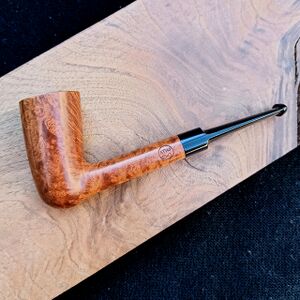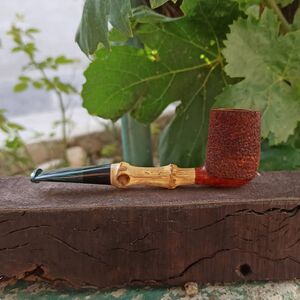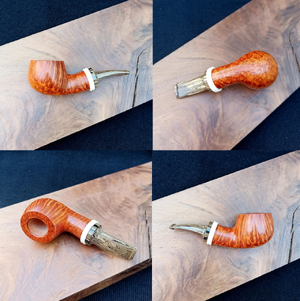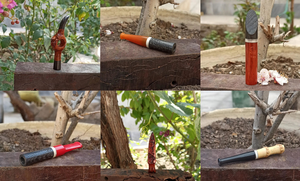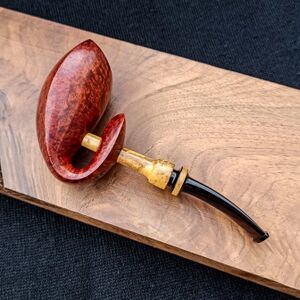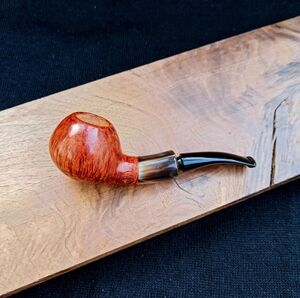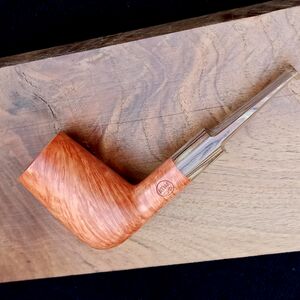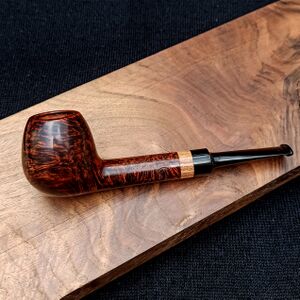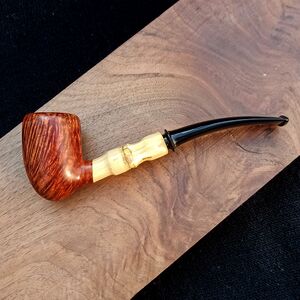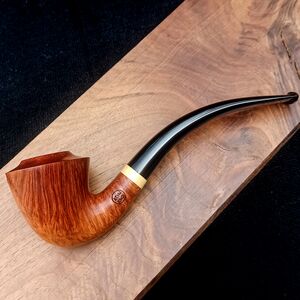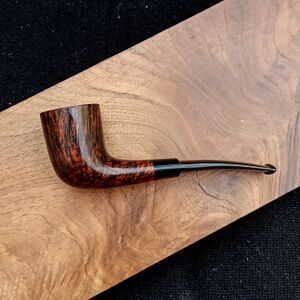Atin
Atin pipes are made by Bahareh Khosroanjam (b. 1989), an Iranian pipemaker born in Bushehr in southern Iran. ‘Atin’ is a transliteration of an Avestan word meaning ‘reached together.’[1]
Khosroanjam was introduced to pipe smoking by Keresaspa, a prominent member of the Iranian pipe smoking community who also makes pipes under the same name. Through their friendship she fell in love with pipes and pipe smoking. For one of her birthdays, Keresaspa gifted Khosroanjam a pipe he had made, a bamboo-shank poker. The two were later married and moved in together in Tehran.
Khosroanjam’s introduction to pipemaking itself did not start with pipes, but instead with practicing wood turning by making tampers and cigarette holders from briar cut-offs in her husband’s workshop. After developing her wood turning skills in this way, her husband agreed to tutor her in the process of making a pipe. In the beginning, Khosroanjam worked slowly, and for only a few hours a day, under the strict coaching of her husband Nazarli. and After 70 days, Khosroanjam finished her first pipe.
Khosroanjam continued to work on her wood turning and on using materials such as bamboo, and soon began selling her pipes under the Atin name. As she made more and more pipes, she had the opportunity to think about and develop her own style and approach to the practice. Her husband’s Keresaspa pipes were, and continue to be, a source of inspiration when it comes to both the aesthetical and technical aspects of a pipe. But Atin Pipes also draw inspiration from other pipemakers, especially 20th century Scandinavian masters, such as Sixten Ivarsson and Bo Nordh, as well as the Japanese pipemaker Kei ‘Ichi Gotoh.
Those with a keen eye for Scandinavian design will likely recognise shapes and motifs in Khosroanjam’s work; Ivarsson’s ‘Peewit’ and ‘Nefertiti’ figures, for example, or Gotoh’s distinctly Japanese take on the ‘acorn,’ can be seen reinterpreted in Atin pipes. Fans of early Danish production pipes, such as those of Stanwell, may also notice a familiarly ‘Danish’ approach to exploring distinct stem designs. Other sources of inspiration for Khosroanjam’s pipemaking include the natural world, such as flowers or fruits, though she generally leans towards minimalist approach to form, and favors smooth, unstained finishes. For her own pipe smoking, Khosroanjam’s enjoys classical, lightweight shapes, especially the bulldog.
Like her husband, Khosroanjam also places a strong emphasis on the engineering side of pipe design, and frequently experiments with the functional properties of her pipes. She keeps these experiments for her own use, until she is content applying the outcomes of her experiments to the next Atin pipe.
Atin pipes are typically made from briar and ebonite, and often include decorative elements such as bamboo, bone, horn, fossil ivory, and exotic woods, such as pistachio, ironwood, purpleheart, and boxwood. Atin also continues to make ornate pipe tampers and cigarette holders.
Gallery
- Some recent Atin pipes (as of June 2023).
Contact Information:
Facebook: https://www.facebook.com/Atinpipes/ Instagram: https://instagram.com/Atinpipes Email: Atinpipes@gmail.com
References
- ↑ Information for this article was provided to the author by Bahareh Khosroanjam.
